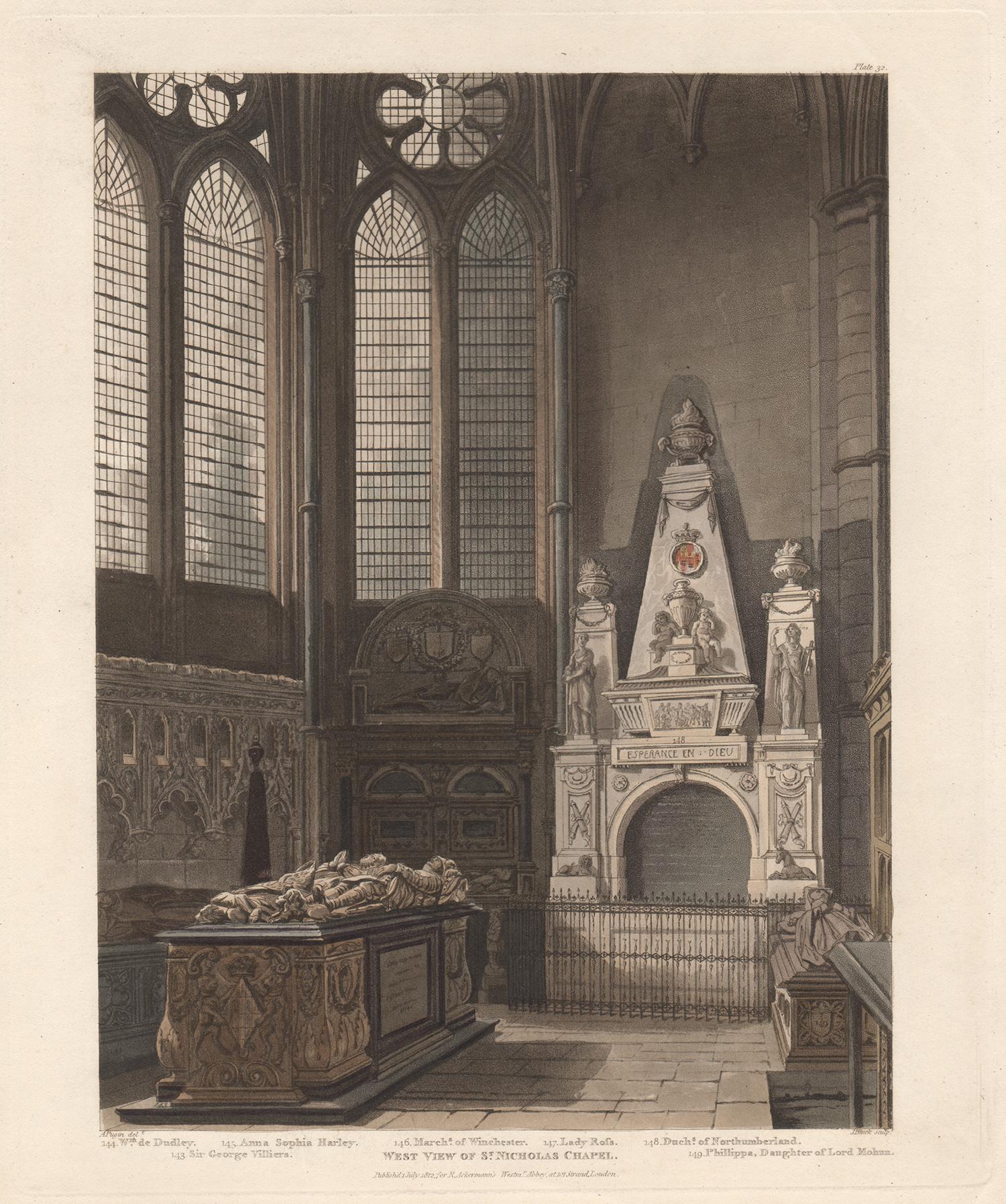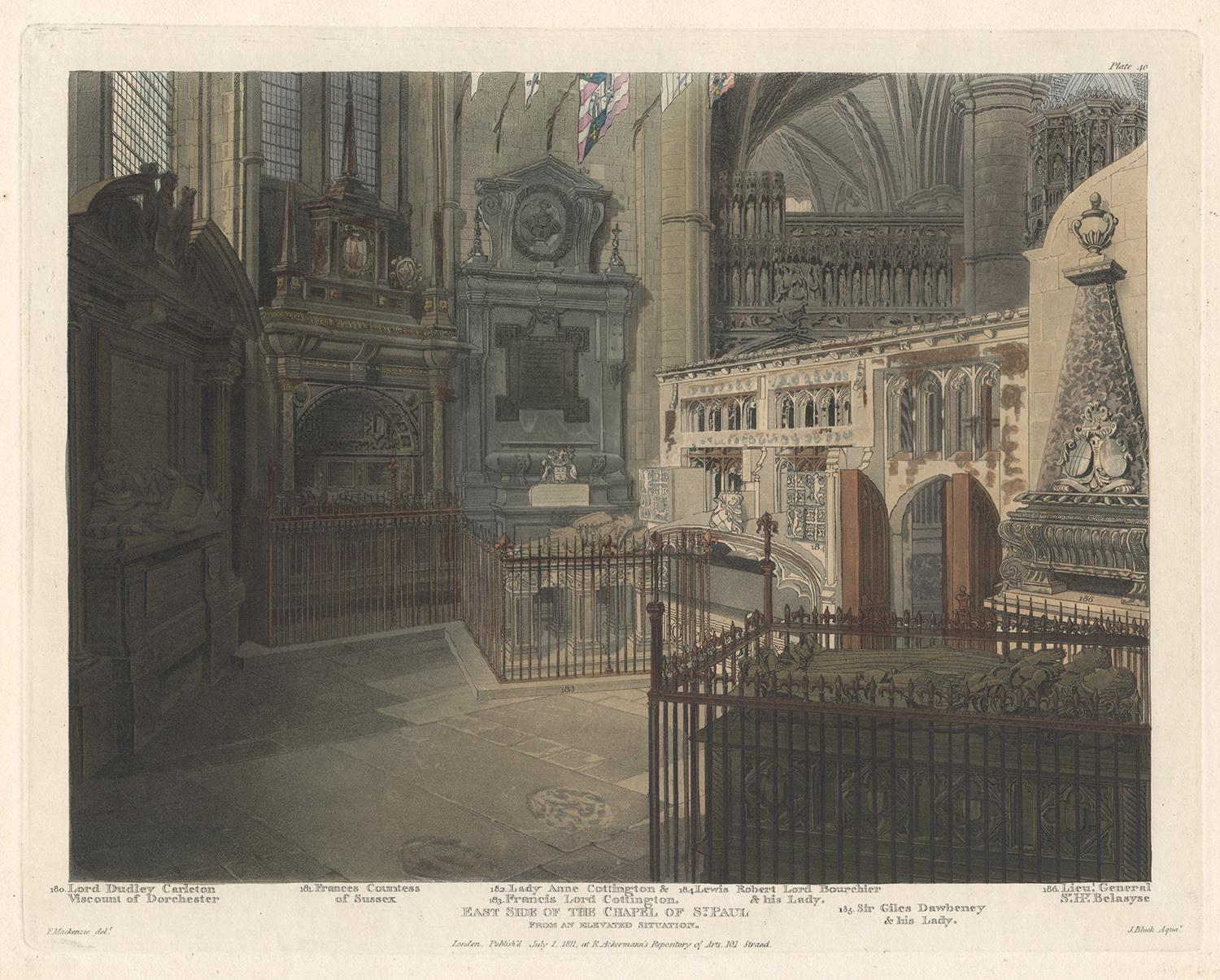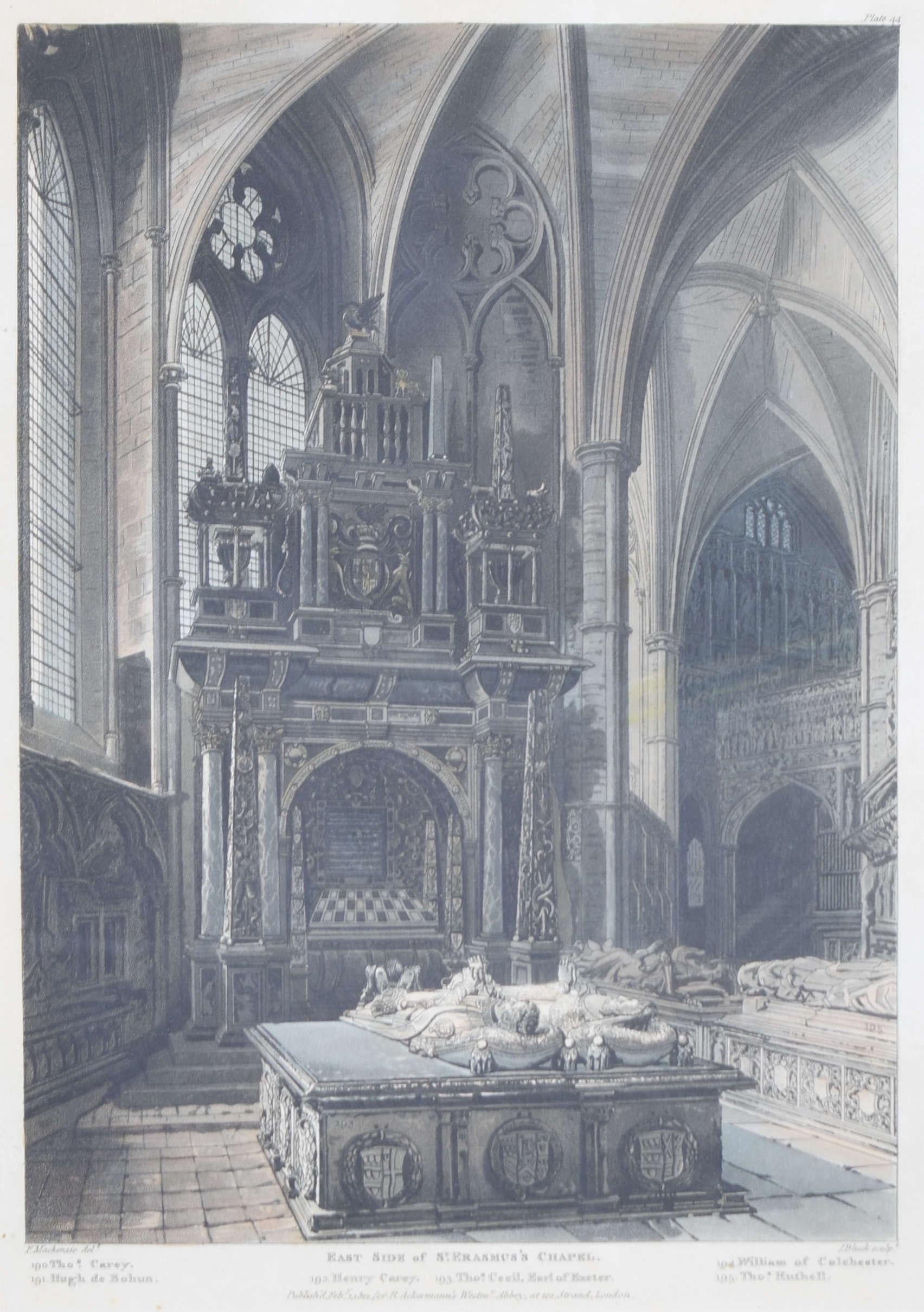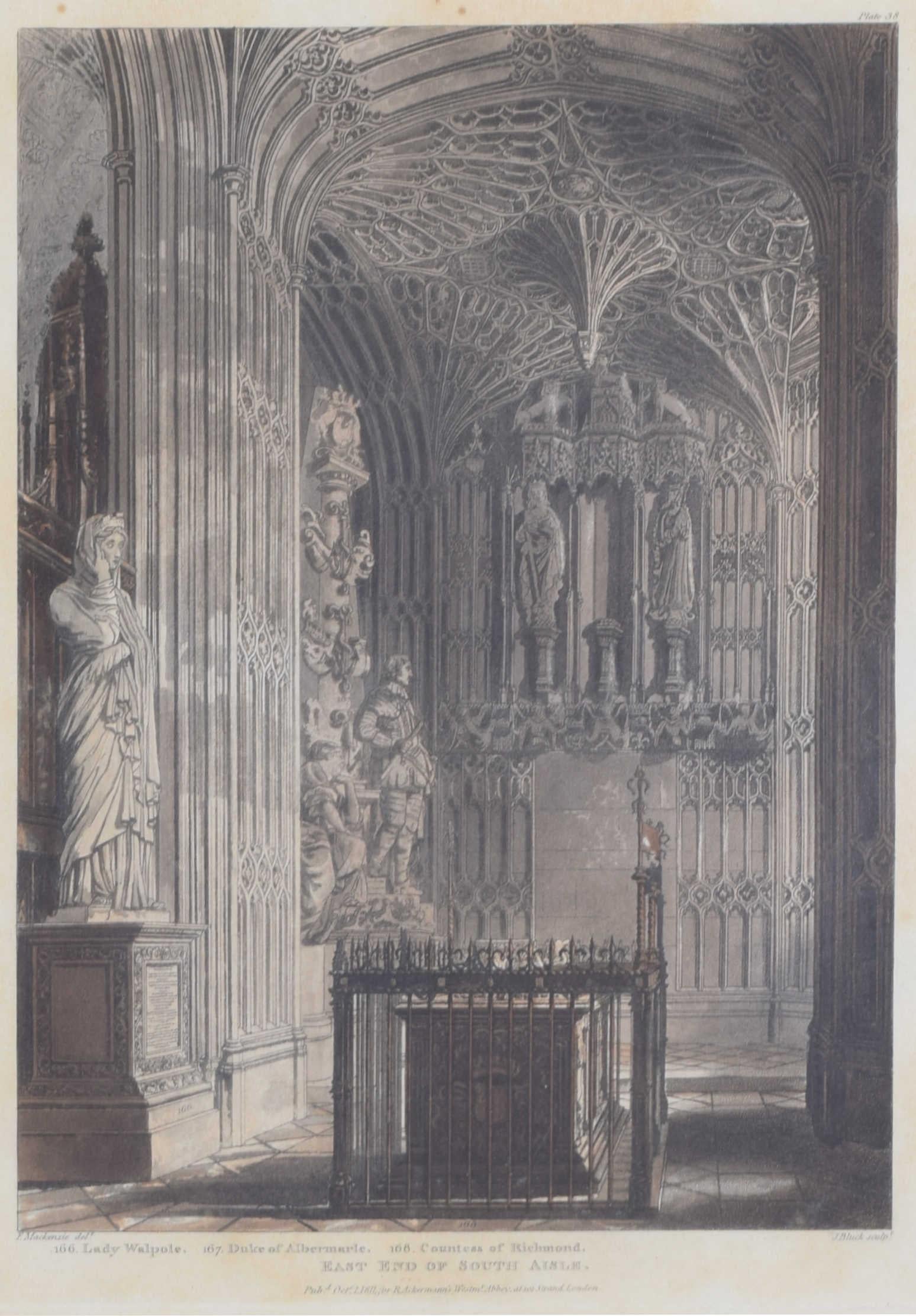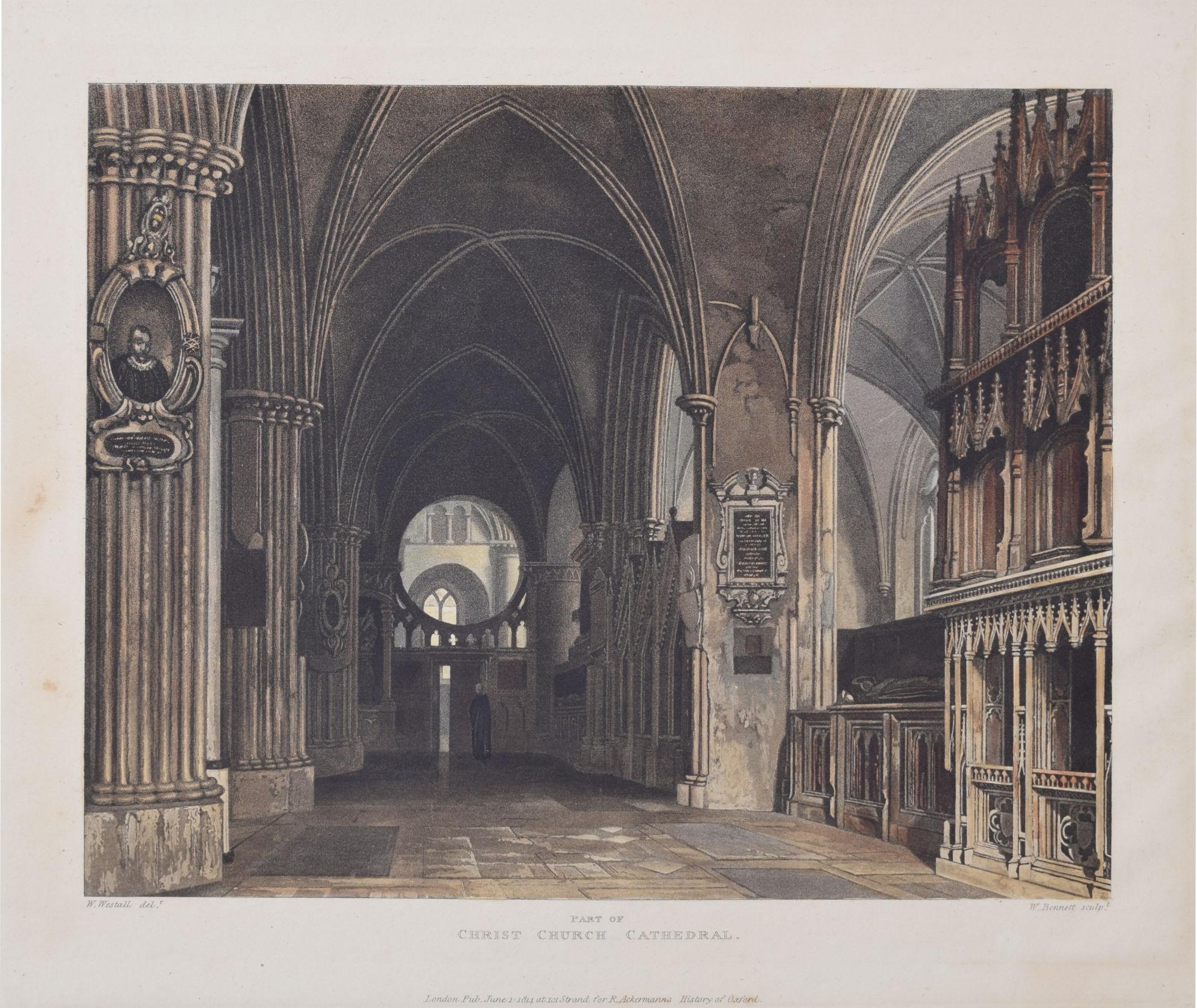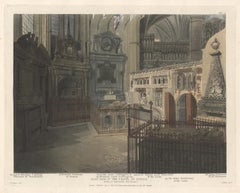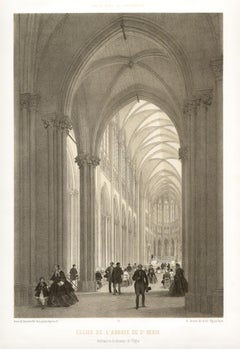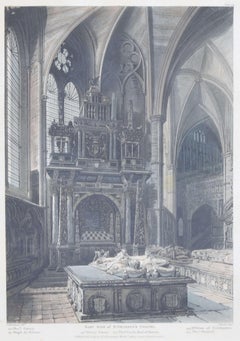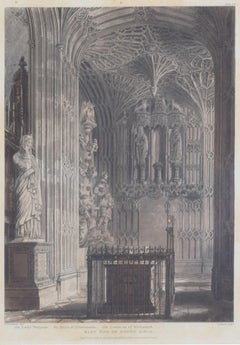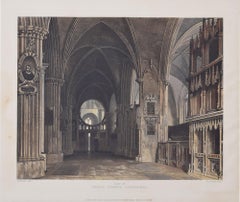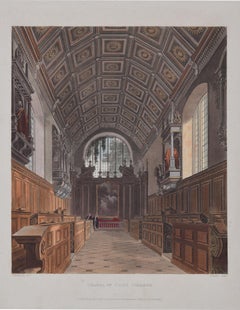Items Similar to West Side of the Chapel of St Paul, Westminster Abbey, architecture aquatint
Want more images or videos?
Request additional images or videos from the seller
1 of 2
John Bluck (active 1791-1819) after Frederick Mackenzie (1788-1854)West Side of the Chapel of St Paul, Westminster Abbey, architecture aquatint1811
1811
$165
£126.20
€144.42
CA$234.84
A$254.26
CHF 135.18
MX$3,066.59
NOK 1,699.97
SEK 1,584.85
DKK 1,078.63
About the Item
Colour aquatint by John Bluck (active 1791-1819) after Frederick Mackenzie (1788-1854).
Architectural interior with superb original colour. From 'Westminster Abbey', published by Rudolf Ackermann (1764-1834).
295mm by 235mm (sheet)
- Creator:
- Creation Year:1811
- Dimensions:Height: 11.62 in (29.5 cm)Width: 9.26 in (23.5 cm)
- Medium:
- Movement & Style:
- Period:
- Condition:One faint spot in top margin, outside the platemark.
- Gallery Location:Melbourne, AU
- Reference Number:1stDibs: LU124426859912
About the Seller
5.0
Gold Seller
Premium sellers maintaining a 4.3+ rating and 24-hour response times
Established in 2005
1stDibs seller since 2019
629 sales on 1stDibs
Typical response time: 1 hour
- ShippingRetrieving quote...Shipping from: Melbourne, Australia
- Return Policy
More From This Seller
View AllWest View of St Nicholas Chapel, Westminster Abbey, architecture aquatint
Located in Melbourne, Victoria
Colour aquatint by John Bluck (active 1791-1819) after Auguste Pugin (1762-1832).
Architectural interior with superb original colour. From 'Westminster Abbey', published by Rudolf A...
Category
Early 19th Century Naturalistic Landscape Prints
Materials
Engraving, Etching, Aquatint
East Side of the Chapel of St Paul, Westminster Abbey, architecture aquatint
By John Bluck (active 1791-1819) after Frederick Mackenzie (1788-1854)
Located in Melbourne, Victoria
'East Side of the Chapel of St Paul'
Colour aquatint by John Bluck (active 1791-1819) after Frederick Mackenzie (1788-1854).
Architectural interior with superb original colour. Fro...
Category
Early 19th Century Naturalistic Landscape Prints
Materials
Engraving, Etching, Aquatint
Paris - Eglise de L'abbaye de St Denis, French lithograph, 1861
By Philippe Benoist
Located in Melbourne, Victoria
'Eglise de L'abbaye de St Denis', tinted lithograph by Felix Benoist (1818-1896).
From a series of lithographs depicting the famous buildings of Paris - 'Paris dans sa Splendeur', p...
Category
Late 19th Century Naturalistic Landscape Prints
Materials
Lithograph
Westminster Abbey, London. Rowland Langmaid signed artist etching print
By Rowland Langmaid
Located in Melbourne, Victoria
Westminster Abbey.
Signed in pencil by the artist below the image.
Rowland Langmaid was a marine painter and etcher who studied under William Lione...
Category
1930s English School Landscape Prints
Materials
Etching
Chiesa di St Maria-Sopra-Minerva, Rome, Italy. Lithograph by Philippe Benoist
By Philippe Benoist
Located in Melbourne, Victoria
'Chiesa di St Maria-Sopra-Minerva. Veduta delle braccia di Croce'
Santa Maria sopra Minerva is one of the major churches of the Roman Catholic Order of Preachers (better known as t...
Category
Late 19th Century Victorian Landscape Prints
Materials
Lithograph
Paris - Bibliotheque du Conservatoire des Arts et Metiers, lithograph, 1861
By Philippe Benoist
Located in Melbourne, Victoria
'Bibliotheque du Conservatoire des Arts et Metiers', tinted lithograph by Felix Benoist (1818-1896).
From a series of lithographs depicting the famous buildings of Paris - 'Paris da...
Category
Late 19th Century Naturalistic Landscape Prints
Materials
Lithograph
You May Also Like
Westminster Abbey St Erasmus' Chapel 1812 print by John Bluck for Ackermann
Located in London, GB
To see our other Oxford and Cambridge pictures, including an extensive collection of works by Ackermann, scroll down to "More from this Seller" and below it click on "See all from this Seller" - or send us a message if you cannot find the view you want.
John Bluck after Frederick Mackenzie (1788 - 1854)
East Side of St Erasmus' Chapel, Westminster Abbey (1812)
Hand-coloured aquatint
28 x 19 cm
Published by Rudolph Ackermann...
Category
1810s Realist Prints and Multiples
Materials
Aquatint
Westminster Abbey South Aisle engraving by John Bluck for Ackermann
Located in London, GB
To see our other Oxford and Cambridge pictures, including an extensive collection of works by Ackermann, scroll down to "More from this Seller" and below it click on "See all from this Seller" - or send us a message if you cannot find the view you want.
John Bluck (early 19th century) after Frederick Mackenzie (1788 - 1854)
East End of South Aisle, Westminster Abbey (1812)
Hand-coloured aquatint
31 x 24 cm
Published by Rudolph Ackermann...
Category
1810s Realist Prints and Multiples
Materials
Aquatint
Christ Church Cathedral, Oxford interior engraving by Bennett after Westall
Located in London, GB
To see our other Oxford and Cambridge pictures, including an extensive collection of works by Ackermann, scroll down to "More from this Seller" and below it click on "See all from th...
Category
1810s Realist Prints and Multiples
Materials
Engraving, Aquatint
Chapel of Caius College, Cambridge engraving by Joseph Stadler for Ackermann
Located in London, GB
To see our other Oxford and Cambridge pictures, including an extensive collection of works by Ackermann, scroll down to "More from this Seller" and below it click on "See all from th...
Category
1810s Realist Prints and Multiples
Materials
Aquatint
Westminster Abbey Chantry Chapel Screen engraving by John Bluck for Ackermann
Located in London, GB
To see our other Oxford and Cambridge pictures, including an extensive collection of works by Ackermann, scroll down to "More from this Seller" and below it click on "See all from this Seller" - or send us a message if you cannot find the view you want.
John Bluck (early 19th century) after Frederick Mackenzie (1788 - 1854)
Screen Over the Chantry of Henry V, Westminster Abbey (1812)
Hand-coloured aquatint
26 x 31 cm
Published by Rudolph Ackermann...
Category
1810s Realist Prints and Multiples
Materials
Aquatint
St. Alban's Abbey Church, High Altar screen /// Robert Clutterbuck Hertford Art
Located in Saint Augustine, FL
Artist: Robert Clutterbuck (English, 1772-1831)
Title: "St. Alban's Abbey Church, High Altar screen"
Portfolio: The History and Antiquities of the County of Hertford
Year: 1815-1827 (First edition)
Medium: Original Engraving on wove paper
Limited edition: Unknown
Printer: Nichols, Son, and Bentley, London, UK
Publisher: Nichols, Son, and Bentley, London, UK
Reference: Brunet II, No. 112; Lowndes No. 483; BAL RIBA No. 666; Upcott I, page 623
Sheet size: 17.63" x 11.38"
Image size: 11.57" x 8.57"
Condition: Scattered foxing throughout sheet; it doesn't show much within the image. Creasing to upper left and right corners. Has been professionally stored away for decades. It is otherwise a strong impression in good condition
Notes:
Provenance: private collection - Aspen, CO. Engraved by English artist John Henry Le Keux (1812-1896) after a drawing by English artist Frederick Nash (1782-1856). Comes from Clutterbuck's three volume "The History and Antiquities of the County of Hertford", (1815-1827) (First edition), which consists of 54 engravings. Printed from one copper plate on one color: black. "Vol. I. p. 65" printed upper right in margin. "Proof" printed lower right in margin.
St Albans Cathedral, officially the Cathedral and Abbey Church of St Alban, also known as "the Abbey", is a Church of England cathedral...
Category
1810s Old Masters Interior Prints
Materials
Engraving, Intaglio
More Ways To Browse
Abbey Antique
19th Century Architectural Prints
Sculpture Ceramique
The Blues Brothers
Used Sea Plane
Vintage Baby Portraits
Vintage Boxing Painting
Vintage Womens Pins
18th Century Dog Paintings
Acrylic Flower Sculpture
Bay Area California Artist
Celotto Afro
Charles Church
Charpentier Georges
Cycladic Art
Emperor Penguin
English Country House Painting
Expressionist Clay Sculpture
